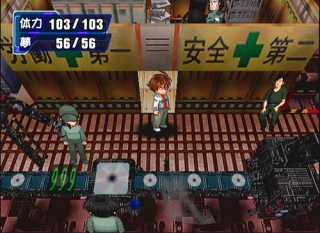Sega Japan vs. Sega America continues to be fascinating
By BlazeHedgehog 10 Comments
Ever since reading Sega-16'sinterview with Tom Kalinske, I have been shown a side of Sega I never knew existed - one that I've found continually fascinating. Unfortunately, Sega-16 has completely redesigned their site and never bothered to re-publish these fantastic articles, so the best I can give you is a Google Cache link. That doesn't really matter, though, as I've stumbled upon something else that also touches on the apparent feud Sega of Japan waged on Sega of America in the 16-bit console era.

We’ve encountered a character in SegaGaga that might bother many long-time American Sega fans. In our present rough drafts, the character’s name is Special Task Force Director Cool. SegaGaga most likely uses him as a reference to Sega of America’s former president, Tom Kalinske.
Let’s look at some history first. At the start of the 16-bit console generation, Sega’s CEO (Nakayama) hired Kalinske to turn around the American market in Sega’s favor. Kalinske reviewed Sega’s situation, went to Japan, and told the board of directors how he thought they could remove themselves from beneath Nintendo’s foot. The board of directors hated all of Kalinske’s ideas, but Nakayama gave his approval. With this freedom, Kalinske built a legacy that rests in the memories of anyone who grew up as a gamer during the 16-bit console generation.
Material success strikes Americans as its own justification, at least in business. Sega of Japan’s board of directors hardly regarded Kalinske’s success in America as virtuous. Yes, he put money in their bank accounts, but he brought a lower branch of Sega greater success than the head could hope to achieve. To describe the corporate power relationships in feudal terms, Kalinske was a chief retainer who had brazenly proven himself more valorous than his lord.
The Japanese corporate world has been known to punish insolence without terminating the person’s career. So Sega of Japan seemingly punished Kalinske. They manipulated the company’s structure to strip him of any real authority, and they left him with all the direct power of England’s royal family. Kalinske became fed up with the whole affair, left Sega, and boosted LeapFrog, Inc., to tremendous success.
Of course, Sega began to stumble toward their present state shortly afterwards. In effect, they razed themselves by exposing Kalinske to passive Japanese corporate discipline and driving him away. Tom Kalinske’s entrance into and exit from Sega might mark the most dramatic part of the company’s history. SegaGaga, as a reflection upon the company’s history as well as the industry in general, addresses these events as a matter of course.
According to everything we’ve translated so far, however, SegaGaga renders Kalinske a villain to the point that he opposes and nearly snuffs the plan intended to save Sega along with the rest of the videogames industry. Both Kalinske and Special Task Force Director Cool are American, and both drastically increased Sega’s hold over the American market. The game’s characters–all Japanese, of course–regard him as “shrewd,” an attitude that contrasts with the other characters’ confidence in the genius of a fun-loving wunderkind. Cool intrudes upon Project SegaGaga with the CEO’s authority, just as the Japanese executives perhaps viewed Kalinske’s presence as unfairly forced upon them by Nakayama. All of this, of course, casts Kalinske (by association with Cool) and a generalized idea of “the American approach to game development” in a bad light.
The full text, including quotes from the game's script and an exploration of what they mean in the grand scheme of SegaGaga's plot, can be found here.

10 Comments